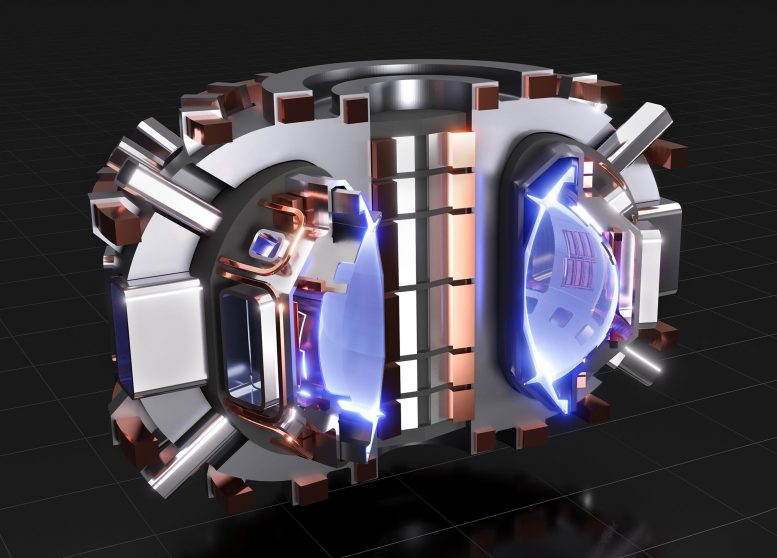
Rendering of SPARC, a compact, high-field, DT burning tokamak, currently under design by a team from the Massachusetts Institute of Technology and Commonwealth Fusion Systems. It’s mission is to create and confine a plasma that produces net fusion energy. Credit: CFS/MIT-PSFC, CAD Rendering by T. Henderson
Daniel Korsun’s undergraduate career at
“I already have this network of peers and professors and staff,” he notes with enthusiasm. “I’ve been kind of training for this for four years.”
Korsun arrived on the MIT campus in 2016 prepared to focus on chemistry, but quickly developed a fascination for the nuclear side of physics. Postponing one of his undergraduate course requirements, he indulged in Professor Mike Short’s Introduction to Nuclear Science class. After that he was “super hooked,” especially by the subject of fusion, a carbon-free, potentially endless source of energy.

MIT graduate student Daniel Korsun holds a reel of the high-temperature superconducting tape that has been the focus of his research, as he stands beside the cyclotron he uses in his experiments. Credit: Steve Jepeal
Learning from his class colleague Monica Pham ’19 about a summer Undergraduate Research Opportunity Program (UROP) opening at the PSFC, Korsun applied and quickly found himself in the center’s accelerator laboratory, which is co-operated jointly with the Department of Nuclear Science and Engineering (NSE).
“I’ve always been interested in clean energy, advanced solar, climate change. When I actually got into the depths of fusion, seeing what the PSFC was doing — nothing ever compared.”
Korsun’s continuing excitement for research at the PSFC ultimately landed him in MIT’s SuperUROP undergraduate research program during his junior year. Guided by NSE Assistant Professor Zach Hartwig and his graduate students, Korsun was learning about the fusion research that remains his focus today, including SPARC, a next-generation fusion experiment that is prototype to a planned energy-producing fusion furnace called ARC.
Both these tokamak designs are being developed by MIT in association with Commonwealth Fusion Systems (CFS), and are dependent on game-changing, high-temperature superconducting (HTS) tape. Magnets created from this tape will wrap around the tokamak’s donut-shaped vacuum chamber, confining the hot